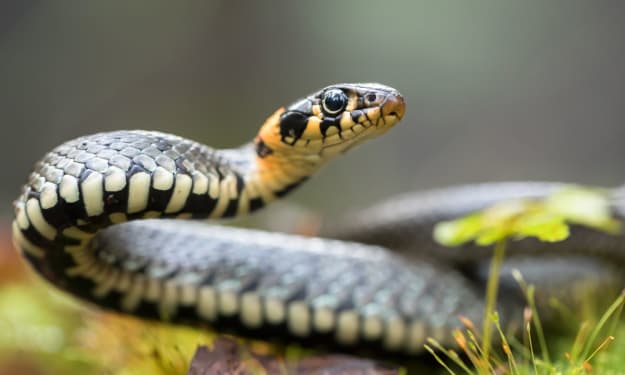Scary Facts About Snakes
That Will Send Shivers Down Your Spine

Snakes have long been the subject of fascination and fear. Their slithering movements, forked tongues, and reputation for being dangerous creatures have captivated human imaginations for centuries. While some people appreciate their beauty and importance in ecosystems, others can't help but feel a shiver down their spine at the mere mention of a snake. In this article, we will delve into the chilling truth behind these enigmatic creatures and uncover seven scary facts about snakes that will send shivers down your spine.
Fact 1: Venomous Snakes and Their Deadly Bites
One of the most terrifying aspects of snakes is their venomous bites. Venomous snakes, such as the Black Mamba and the Inland Taipan, possess potent toxins that can cause paralysis, tissue damage, and even death. These snakes have specialized fangs that inject venom into their victims, ensuring a swift and effective attack. The venom works by interfering with the victim's nervous system, leading to a range of symptoms, including excruciating pain, respiratory distress, and organ failure. It's no wonder that encounters with venomous snakes are a nightmare for many.
Fact 2: Snakes' Ability to Swallow Prey Whole
Another hair-raising fact about snakes is their remarkable ability to swallow prey whole. Snakes have an incredibly flexible jaw structure that allows them to consume prey much larger than their own head. They dislocate their jaws to accommodate large meals, such as rodents, birds, and even other snakes. Witnessing a snake unhinging its jaw and swallowing prey whole is an unsettling sight that reinforces their predatory nature. This ability, combined with their stealth and patience, makes them formidable hunters in the animal kingdom.
Fact 3: Snakes' Exceptional Camouflage Skills
Snakes are masters of disguise, and their exceptional camouflage skills make them even more spine-chilling. Many snake species have evolved colors and patterns that blend seamlessly with their surroundings, making them nearly invisible to unsuspecting prey. For example, the Green Tree Python perfectly mimics the foliage of trees, while the Gaboon Viper expertly camouflages itself among fallen leaves. This ability to blend in with their environment allows snakes to ambush their prey with deadly precision, leaving their victims with little chance of escape.
Fact 4: The Surprising Range of Snake Species Worldwide
Snakes can be found in almost every corner of the world, from the icy tundras of the Arctic to the scorching deserts of the Sahara. With over 3,000 known species, they have managed to adapt and thrive in diverse habitats. Whether it's the King Cobra in Southeast Asia or the Rattlesnake in North America, snakes have established their presence across continents. The sheer variety and ubiquity of snake species serve as a constant reminder that these creatures are not confined to distant jungles or exotic lands but can be found closer to home than we might think.
Fact 5: Snakes' Remarkable Ability to Survive in Extreme Conditions
Snakes are known for their remarkable ability to survive in extreme conditions that would be deadly for most other animals. Some species can endure extreme heat or cold, while others can survive for extended periods without food or water. For example, the Sidewinder, a desert-dwelling snake, has adapted to the harsh conditions of the Sahara by moving in a sidewinding motion that reduces contact with the hot sand. Their ability to adapt and thrive in inhospitable environments is a testament to their resilience and adds to the spine-chilling mystique surrounding them.
Fact 6: Snakes' Unique Reproduction Methods
Snakes have some of the most unusual reproductive methods in the animal kingdom, and these methods can be quite unsettling. Some snake species reproduce asexually, meaning they can produce offspring without the need for a mate. This process, known as parthenogenesis, allows female snakes to clone themselves, resulting in offspring that are genetically identical to their mother. Additionally, some snake species engage in complex mating rituals, such as the mesmerizing dance of male Rattlesnakes, which involves vibrating their tails to attract females. These unique reproductive methods only serve to deepen the intrigue and fear associated with these slithering creatures.
Fact 7: The Potential Danger of Pet Snakes
While snakes in the wild can be intimidating, there is also potential danger associated with keeping snakes as pets. Many snake species have specific care requirements and can pose a risk to inexperienced owners. Some larger species, such as the Burmese Python, have been known to attack and injure their owners or escape captivity, posing a threat to the local ecosystem. It is crucial to thoroughly research and understand the needs of any snake species before considering them as pets. Proper education and responsible ownership are essential to prevent any harm to both humans and snakes.
Overcoming Fear: Understanding Snakes and Their Role in Ecosystems
Now that we've explored these chilling facts about snakes, it's important to remember that they play a vital role in maintaining the balance of ecosystems. Snakes help control populations of rodents and other small animals, preventing them from becoming overpopulated. They also serve as a food source for larger predators, contributing to the intricate web of life in nature. By understanding the importance of snakes and their ecological role, we can overcome our fears and appreciate the fascinating world they inhabit.
Conclusion: Appreciating the Fascinating World of Snakes
In conclusion, snakes are truly fascinating and mysterious creatures that can elicit both fear and awe. Their venomous bites, ability to swallow prey whole, exceptional camouflage skills, and unique reproductive methods are just a few of the chilling facts that make snakes such intriguing subjects. While it's natural to feel a shiver down your spine when encountering a snake, it's important to recognize their significance in ecosystems and the need for coexistence. By appreciating the incredible adaptations and behaviors of snakes, we can gain a deeper understanding and respect for these mesmerizing creatures. Next time you encounter a snake, take a moment to admire its beauty and appreciate the intricate wonders of the natural world.






Comments
There are no comments for this story
Be the first to respond and start the conversation.